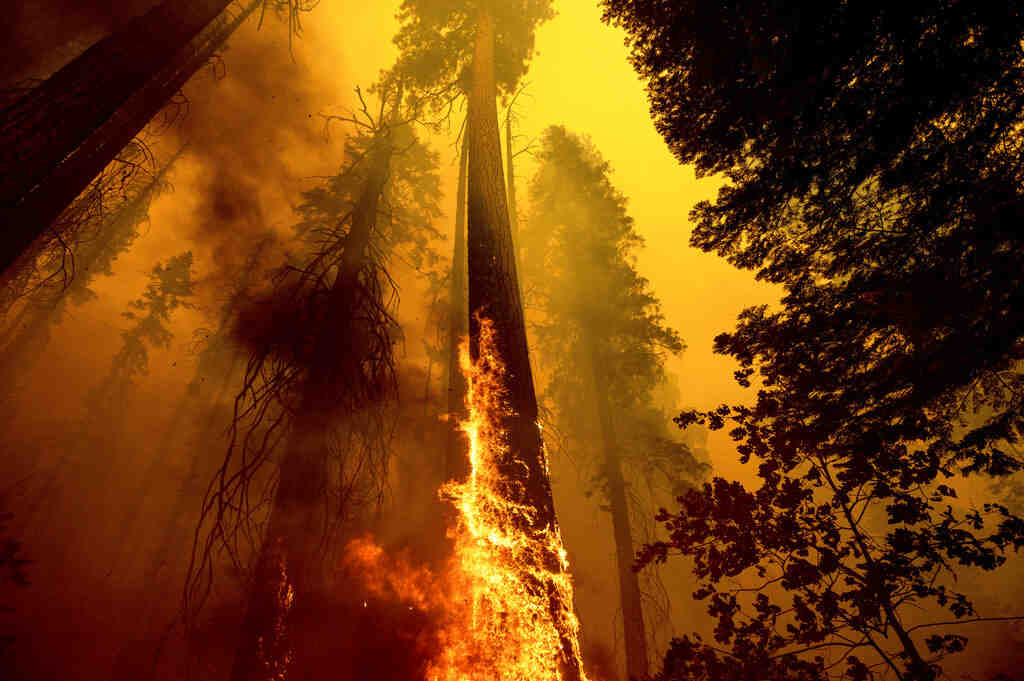(KTXL) – The establishment of Sacramento at the confluence of the Sacramento and American Rivers was strategic, but it would also be devastating for the capital’s early residents and shape the city’s future development.
When John Sutter first established Sutter’s Fort, local Native Americans warned Sutter that the Sacramento Valley was prone to flooding and could become a small inland sea, prompting Sutter to build the fort on high ground. (Sutter’s Fort is located 1.5 miles south of the American River and two miles east of the Sacramento River.)
With the influx of people to Sacramento at the start of the Gold Rush, many built their homes and businesses along the river as open land quickly filled in and river ports provided trading opportunities.
According to Sacramento preservation historian William Burg, Sutter was absent from the fort when the gold rush began. Sam Brannan, California’s first millionaire, also knew about the floods, but took advantage of the fact that 1849 was a drought year to convince people that the floods were not a major threat.
In 1850, the first of many floods that drowned Sacramento inspired the city’s first elected mayor, Hardin Bigelow, to build a levee near the confluence of the two rivers. However, this dyke would only be a minor impediment to another year of flooding. In 1851 and 1852, the city was again submerged.
Following these series of floods, the city began its protracted efforts to raise city streets and buildings higher and higher to try to avoid the floodwaters.
Even with these additional flood control measures, a perfect storm of weather in 1861 caused massive flooding across the state of California which is still considered one of the costliest natural disasters in the history of California. ‘State. The estimated cost of the damage was approximately $100 million in 1862 dollars, equivalent to $2.89 billion today.
It started with an earlier than expected snowfall in November 1861. Then a rise in temperature caused the first snowfall to melt in the valley in December.
With saturated ground across the state, there were 43 straight days of rain that brought more than 10 feet of rain with snow at higher elevations.
What Native Americans had warned Sutter about all those decades ago has come true. An inland sea stretched 300 miles north to south and 60 miles east to west down the valley.
This 10 to 20 foot deep body of water would remain in the valley for six months. The flood killed nearly 4,000 people and 1 million head of cattle. He also destroyed a quarter of California’s taxable property, nearly forcing the state into bankruptcy.
In Sacramento, the levees burst on January 10, 1862, forcing newly elected Governor Leland Stanford to take a rowboat for his inauguration.
It also caused the State Capitol to relocate from Sacramento to San Francisco for six months to allow time for floodwaters to recede and for the construction of a new Capitol building in Sacramento.
“Ironically, one of the main flood control mechanisms, a levee along R Street that supported the Sacramento Valley Railroad tracks, exacerbated the flood damage because the city was inundated from the north and the R Street railroad levee prevented flood waters from flowing to the south, until a hole was made in the levee,” Burg said.
After the city was under water for six months, city leaders decided it was time to make a serious effort to reduce flooding – or at least reduce flood damage.
Streets along I, J, and K Streets were raised an entire story, and larger levees were built along the Sacramento and American Rivers to begin with.
“The American River (was moved) farther north and straightened its course, so that the mouth of the river was farther from downtown; it also included giving the land occupied by the old river mouth to the Central Pacific Railroad whose route out of Sacramento north of downtown served as a much larger flood control levee to the north,” Burg said.
In the early and mid-20th century, the creation of more dams and levees helped prevent devastating floods like those of the early 1850s and 1860s from drowning Sacramento again. With the completion of Folsom Dam in 1955, the American River was prevented from flooding Sacramento again.
“It clearly worked because Sacramento didn’t experience a catastrophic flood of the severity of the floods of 1850, 51, 53 or 61-62,” Burg said.
UPDATE: YouTube TV and Disney have reached a new distribution deal and YouTube TV has begun restoring Disney channels, including ESPN, to its service. The Virtual MVPD said it will still give subscribers a one-time $15 credit.
Was Chris Burrows married?

What happened to Chris Burrows? Death. According to a Los Angeles County coroner’s report, Burrous died of methamphetamine toxicity, complicated by hypertensive and atherosclerotic cardiovascular disease on December 27, 2018. He was found unconscious at a Days Inn in Glendale, California. .
Where is Chris Burrous buried?
Chris Burrous, a longtime KTLA host in Los Angeles and former KGET host in Bakersfield, was laid to rest Friday at Rose Hills Cemetery in Whittier, KTLA reported.
Who died on Channel 5?
Los Angeles-based KTLA weekend news anchor and reporter Chris Burrous was found dead Thursday at a motel. He was 43 years old. According to a statement from Glendale police, authorities received a call at 1:14 p.m. PT that Burrous “may have overdosed” and was unconscious.
Where is Chris Schauble?
Chris Schauble is a co-anchor of KTLA 5 Morning News weekdays from 4-7 a.m. He also co-hosts “Off The Clock” on the KTLA digital app. Since arriving in Los Angeles in 2001, Chris has won numerous awards, including five Emmys and six Golden Mics.
Where is Vera Jimenez?

Vera Jimenez is the KTLA 5 weatherman for the KTLA 5 News at 6 a.m., 6:30 a.m., 10 a.m., and 11 a.m. weeknights. Vera was born in Mexico and moved to Southern California when she was 3 years old. Most of his family still lives in Garden Grove.
How much do KTLA anchors make?

The base salary for News Anchor at companies like KTLA ranges from $35,649 to $58,615 with an average base salary of $44,448. Total cash compensation, which includes bonuses and annual incentives, can range from $35,895 to $58,930 with an average total cash compensation of $44,714.
How much do local news anchors earn? Salary Ranges for Local News Anchors Salaries for local news anchors in the United States range from $13,380 to $350,481, with a median salary of $64,162. The middle 57% of local news anchors earn between $64,163 and $159,166, with the top 86% earning $350,481.
Who is the highest paid News Anchor in Los Angeles?
Los Angeles’ highest paid anchor is KNBC’s Paul Moyer, who reportedly earns $2 million a year.
Which News Anchor gets paid the most?
1. Anderson Cooper net worth – $200 million. Anderson Cooper is the richest newscaster. His current net worth is $200 million.
Who are the highest paid news anchors 2020?
Here are some of the highest paid news anchors who are women.
- Rachel Maddow – $20 million. …
- Kelly Ripa – $22 million. …
- Robin Roberts – $25 million. …
- Greta Van Susteren – $35 million. …
- Meredith Vieira – $40 million. …
- Katie Couric – $55 million. …
- Diane Sawyer – $80 million. …
- Barbara Walters – $150 million.
What do top news anchors make?
TV presenter salaries in the United States range from $25,486 to $672,631, with a median salary of $122,337. The middle 57% of TV anchors earn between $122,337 and $304,498, with the top 86% earning $672,631.
How much do TV news anchors make in Los Angeles?
Salary Ranges for News Anchors in Los Angeles, CA The middle 57% of news anchors earn between $52,815 and $108,599, with the top 86% earning $222,638.
How much do local News Anchors make in California?
The average salary for a news anchor in California is around $67,230 per year.
How much does a news anchor make at KTLA?
The base salary for News Anchor at companies like KTLA ranges from $35,561 to $58,468 with an average base salary of $44,330. Total cash compensation, which includes bonuses and annual incentives, can range from $35,797 to $58,783 with an average total cash compensation of $44,606.
Who is the new anchor on KTLA?

Emmy Award-winning Lynette Romero brings extensive current affairs experience to her role as a reporter and anchor for KTLA 5 Morning News.
Who’s new on KTLA? Mark Mester is a KTLA 5 Weekend Morning News anchor. He joined the station in May 2014. If you ever want to have a long chat with Mark, just ask him where he’s from.
How old is ktla5?
On January 22, 1947, the station was granted a commercial broadcast license as KTLA on channel 5, becoming California’s first commercial television station, the first in the city of Los Angeles, the first to broadcast in the west of the Mississippi River and the Eighth. commercial television station in the United States.
Where did Liberte Chan go?
On Sunday, Liberty Chan said goodbye to KTLA’s weekend morning news. Chan told viewers that her news contract was coming to an end and she was going to focus on LA Unscripted, which airs weeknights at 7 p.m.
Who just left KTLA 5 News?
Steve Kuzj was a generalist reporter for KTLA 5 News. He left the station in July 2021.
Who just left KTLA 5 News?
Steve Kuzj was a generalist reporter for KTLA 5 News. He left the station in July 2021.
Who recently left KTLA?
For nearly two decades, Mark Kono has flown the freeways of Los Angeles to make sure we avoid traffic and get to work on time.
Why did Carlos leave KTLA?
In September 2007, Amezcua left KTLA for KTTV, where he replaced John Beard as Fox 11 News anchor at 10:00 p.m.; he left KTTV in 2013 to start his own media company, Carlos Media Corporation.
Sources :

